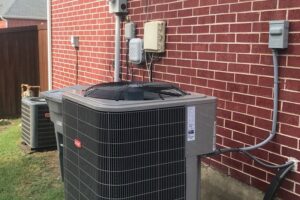Choosing the right type of steel for your project is critical for performance, safety, and cost-efficiency. Two of the most commonly used materials in industrial, construction, and manufacturing sectors are Alloy Steel Plates and carbon steel. While both share core similarities, they have significant differences in terms of composition, strength, and applications.
In this blog, we’ll explore the key differences between alloy steel and carbon steel plates, discuss their pros and cons, and help you decide which is best suited for your needs.
What Are Alloy Steel Plates?
Alloy Steel Plates are made by adding various alloying elements—such as chromium, nickel, molybdenum, vanadium, or manganese—to the base iron-carbon structure. These additions enhance specific mechanical properties, including strength, hardness, toughness, and corrosion resistance.
Common Types of Alloy Steel Plates:
- Low Alloy Steel Plates: Typically contain less than 5% alloying elements.
- High Alloy Steel Plates: Contain more than 5% alloying content, often for highly specialized industrial applications.
What Is Carbon Steel?
Carbon steel is composed primarily of iron and carbon, without significant amounts of other elements. It is classified into three types:
- Low Carbon Steel: Contains less than 0.3% carbon.
- Medium Carbon Steel: Contains between 0.3%–0.6% carbon.
- High Carbon Steel: Contains more than 0.6% carbon.
The mechanical properties of carbon steel depend mostly on its carbon content. Higher carbon levels increase strength but reduce ductility and weldability.
Key Differences Between Alloy Steel Plates and Carbon Steel
Let’s break down the differences based on several critical factors:
| Feature | Alloy Steel Plates | Carbon Steel |
|---|---|---|
| Composition | Iron + carbon + alloying elements | Primarily iron and carbon |
| Strength | Higher tensile & yield strength | Lower than alloy steel (except high-carbon) |
| Hardness | Better hardness and wear resistance | Depends on carbon content |
| Corrosion Resistance | Enhanced with chromium, nickel, etc. | Poor to moderate |
| Weldability | Good (varies by alloy content) | Generally easier (low carbon steel) |
| Cost | More expensive due to added elements | More economical |
| Applications | High-performance industrial uses | General construction and manufacturing |
Advantages of Alloy Steel Plates
- Superior Strength:
Alloy Steel Plates are engineered to provide excellent tensile and yield strength, which is essential for applications under high stress. - Better Corrosion Resistance:
The inclusion of elements like chromium and nickel enhances corrosion resistance, making these plates ideal for marine, offshore, and chemical environments. - Improved Toughness and Wear Resistance:
Alloy steels perform well under dynamic loading and harsh wear conditions. - High-Temperature Performance:
Suitable for boilers, pressure vessels, and heat exchangers, alloy steels retain strength even at elevated temperatures.
Disadvantages of Alloy Steel Plates
- Higher Cost:
Due to the addition of alloying elements and complex manufacturing processes, alloy steel is typically more expensive than carbon steel. - Machinability:
Depending on the composition, some alloy steel plates may be more challenging to machine or weld.
Advantages of Carbon Steel
- Affordability:
Carbon steel is generally cheaper, making it ideal for mass-production and budget-sensitive projects. - Ease of Fabrication:
Especially in low-carbon forms, carbon steel is easier to cut, form, and weld. - Readily Available:
Widely available across global markets in various shapes, sizes, and grades.
Disadvantages of Carbon Steel
- Lower Corrosion Resistance:
Carbon steel is more prone to rust and degradation in corrosive environments unless it’s coated or treated. - Limited Strength:
Compared to alloy steel, the strength and durability of carbon steel are generally lower, especially in critical industrial uses.
When to Use Alloy Steel Plates
You should consider Alloy Steel Plates for:
- Pressure Vessels and Boilers
- Oil & Gas Pipelines
- Power Generation Equipment
- Shipbuilding and Offshore Structures
- Heavy Equipment and Mining Machinery
In these applications, performance, safety, and longevity are more important than cost, and alloy steel’s advanced properties are a clear advantage.
When to Use Carbon Steel
Carbon steel is an excellent choice for:
- Structural Steel Frameworks
- Pipes and Tubing in General Industry
- Automobile Bodies
- Welded Fabrications
- Household Appliances and Tools
Follow for more
If your project demands standard strength and has limited exposure to corrosive or high-stress environments, carbon steel is sufficient and cost-effective.
Industry Insight: Why Alloy Steel Is Becoming the Preferred Choice
While carbon steel remains a popular and economical choice, the demand for Alloy Steel Plates is rising globally due to:
- Stringent Safety Standards in Energy and Infrastructure
- Longer Lifespan of Components in Harsh Conditions
- Growth in Offshore, Chemical, and Power Sectors
For example, ABREX Plates—abrasion-resistant alloy steel plates—are increasingly used in mining and construction industries for their superior durability and performance. These plates not only extend the service life of equipment but also reduce maintenance downtime and costs.
Final Verdict: Alloy Steel Plates or Carbon Steel?
The decision ultimately comes down to your project’s specific needs:
| Use Case | Recommended Steel |
| General construction | Carbon Steel |
| High-strength structures | Alloy Steel Plates |
| Corrosive environments | Alloy Steel Plates |
| Budget-sensitive builds | Carbon Steel |
| Long-term durability | Alloy Steel Plates |
If you’re working in sectors like oil & gas, energy, shipbuilding, or mining, Alloy Steel Plates—including specialized grades like ABREX Plates—are the smart investment.
Conclusion
Both carbon steel and Alloy Steel Plates have their place in the metalworking and manufacturing world. While carbon steel is an excellent go-to for basic structural applications, alloy steel’s enhanced properties offer superior value for advanced industrial requirements.
Looking for premium-quality Alloy Steel Plates for your next project? Whether it’s pressure vessels, offshore platforms, or mining equipment, sourcing the right grade of alloy steel can make all the difference.






